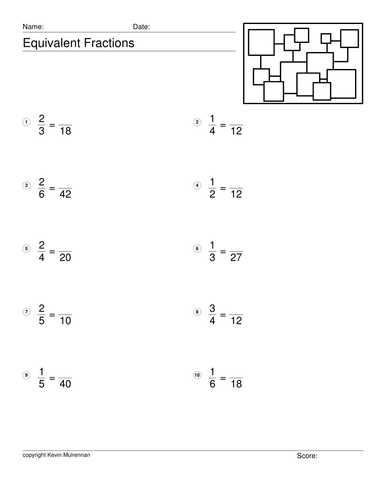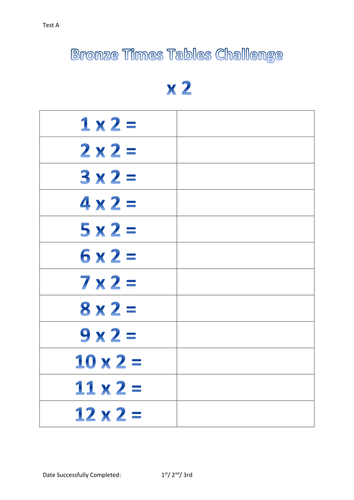406Uploads
123k+Views
41k+Downloads
Math
Sale

1000 Questions Addition Mathematics KS1 Adding Up
1000 questions with answers.
Pupils have to add up either 3 or 4 numbers under 10.
Sale

Teaching Resources worksheets Area Perimeter Mathematics
I have designed 100 worksheets on calculating area and perimeter for primary school children. There is a wide variety of difficulty. Some sheets just require area, some perimeter, some a mixture of the two. In some rectangles are used, others have triangles. You can use your professional judgement to choose the appropriate sheet. Answer sheets are provided for all worksheets.
Sale

Teaching Resources worksheets Shapes Maths Triangles Octagons
I have designed 100 worksheets on shapes for primary school children. They have to write the name of the shape on the sheet. An answer sheet is in the picture. A great reinforcement exercise or you can give a sheet to a bright pupil to keep them occupied. You can use your professional judgement to choose the appropriate sheet. Answer sheets are provided for all worksheets.
Sale

Number Order 100 Worksheets with Answers Maths Mathematics KS1
100 worksheets with answers on Number Order.
Pupils have to put the numbers in the correct order.
There are at least 10 sets of numbers per sheet.
A nice little time filler.
Sale

Teaching Resources 100 worksheets Time Passages KS2 Maths Mathematics
I have designed 100 worksheets on time passages for primary school children. They have to draw the time hands on the clocks on the sheets. What time will it be? - There are two clocks . The first clock shows a time, the second clock is blank. A question like "What time will it be in 2 hr and 20 min?" appears below the clocks. The student draws the answer on the second clock. You can use your professional judgement to choose the appropriate sheet. Answer sheets are provided for all worksheets.
Sale

Equivalent Fractions 100 Worksheets with Answers Maths
100 worksheets with answers.
20 per sheet.
Pupils have to write the equivalent fractions.
Sale

1000 Questions Advanced Division with Remainders KS2 Mathematics Calculator Use
Please check out my bundles which provide great value.
1000 questions on division.
Great for calculator use.
Answers provided.
Pupils divide a three digit number by a 2 digit one.
There are remainders in these questions.
Sale

Year 4 Planning Autumn Term Literacy Numeracy KS2
Important! If you’d like to buy the whole year’s planning (Autumn, Spring and Summer) you’d be better off buying my bundle.
Planning for the Autumn term for year 4.
You get 160 mb of material so good value imo.
I taught mainly in Catholic schools so has a Catholic bent. But as we live in a multicultural society, this should be no problem.
You get planning for:
creative curriculum
Literacy
Numeracy
P.E. (some)
Science (some)
R.E. (Advent, Abraham, Judaism etc)
Loads of great lessons to ease your Sunday afternoons. Just cut and paste into your school template.
Sale

Numeracy Maths Year 4 Planning Angles Protractors Perimeter Area
Some nice planning and worksheets for year 4.
Nearly 3 mb of stuff.
sample plannimng :
Draw rectangles and measure and calculate their perimeters; find the area of rectilinear shapes drawn on a square grid by counting square Perimeter, names of 2d shapes
Addition
Total
Mentally adding 4 numbers (single and two digit) WALT – draw find the perimeter and area of a rectangle
WILF – accurate measurements
Knowledge of what perimeter is
Knowing what area is and how to calculate
Good mental methods
Children will know how to find the perimeter of a rectangle. Pupils will also need to be reminded of units of measure that we may need to use – mm/cm.
Target maths P82 In real life situations, when would you need to know the perimeter of something? What unit of measurement might we need for the suggested things?
Sale

Angles Worksheets 10000 Questions Measure the Angles Mathematics Geometry KS2
A simple concept. But effective.
10000 questions where you have to measure the angle using a protractor.
Pupils write the answer directly on the sheets.
All answers provided.
Over 2000 pages so please be patient when downloading.
Great value.
Enjoy!
Sale

Times Tables Worksheets 2 to 12 18 One Page Worksheets Maths Test A
Worksheets to help times tables.
The 2, 3, 4, 5 and 6, 7, 8, 9, 10, 11 and 12 times tables are tested. 3 sheets for each one.
These are test A. Tests B and C are also available
Sale

1000 Questions Multiplication Mathematics KS2 Calculator Use
Please check out my bundles which provide great value.
1000 questions on multiplication.
Great for calculator use.
Answers provided.
Pupils multiply a 2 digit number by a 2 digit one.
Sale

1000 Questions Advanced Division No Reminders KS2 Mathematics Calculator Use
Please check out my bundles which provide great value.
1000 questions on division. There are no remainders
Great for calculator use.
Answers provided.
Pupils divide a three digit number by a 2 digit one.
Sale

Maths Puzzles Across Down Subtraction 100 Puzzles Plus Answers
100 puzzles plus answers.
Great for reinforcing maths.
Across-Downs is a fun activity that reinforces addition and subtraction skills.
The object of the exercise set is to find the answer for each row and column, then use those answers to calculate the final answer in the lower right-hand corner of the puzzle.
This set tests subtraction.
Sale

50000 Questions American U.S.A. Coins Adding Up Worksheets
50,000 questions on American coins.
The worksheets contain visual images of coins. Pupils have to add them up and write the number of cents on the side.
All answers provided.
I have tried to vary things as much as possible.
e.g.
different number of coins
some heads
some tails
This is a big file so please be patient whilst downloading. There are over 16,000 pages (questions plus answers)
Happy teaching!
Sale

15000 Questions Australian Coins Adding Up Maths Australia Mathematics Shopping
15000 questions on adding up Australian coins.
All answers provided.
I’ve added as much variety as I can. e.g. heads and tails, some mixed, some in ascending oredr, some descending, some mixed
Sale

Year 4 Planning Spring Term Numeracy Literacy KS2
Important! If you’d like to buy the whole year’s planning (Autumn, Spring and Summer) you’d be better off buying my bundle.
Planning for the Spring term for year 4.
You get 160 mb of material so good value imo.
I taught mainly in Catholic schools so has a Catholic bent. But as we live in a multicultural society, this should be no problem.
You get planning for:
creative curriculum
Literacy
Numeracy
P.E. (some)
Science (some)
R.E. (Christmas, Lent etc)
Loads of great lessons to ease your Sunday afternoons. Just cut and paste into your school template.
Sale

1000 questions Counting Patterns Mathematics KS2 Calculator Use
Please check my bundles for better value.
1000 questions on counting patterns.
All answers provided.
Pupils have to, for example, count by 6 from 7 to 61
Sale

1000 questions Multiplication Powers of Ten Mathematics KS2 Calculator use
Please check out my bundles which provide great value.
1000 questions on multiplication.
Great for calculator use.
Answers provided.
Pupils multiply a 2 digit number by a 2 digit one. The second number is a power of 10 (e.g. 20, 30, 40 etc.)
Sale

Year 4 Summer term Planning Numeracy Literacy KS2
Important! If you’d like to buy the whole year’s planning (Autumn, Spring and Summer) you’d be better off buying my bundle.
Planning for the Summer term for year 4.
You get 114 mb of material so good value imo.
I taught mainly in Catholic schools so has a Catholic bent. But as we live in a multicultural society, this should be no problem.
You get planning for:
creative curriculum
Literacy (Stories that raise issues, Poetry etc)
Numeracy (Fractions and Decimals etc)
P.E. (some)
Science (some)
R.E. ( Easter, Pentecost etc)
Loads of great lessons to ease your Sunday afternoons. Just cut and paste into your school template.




















